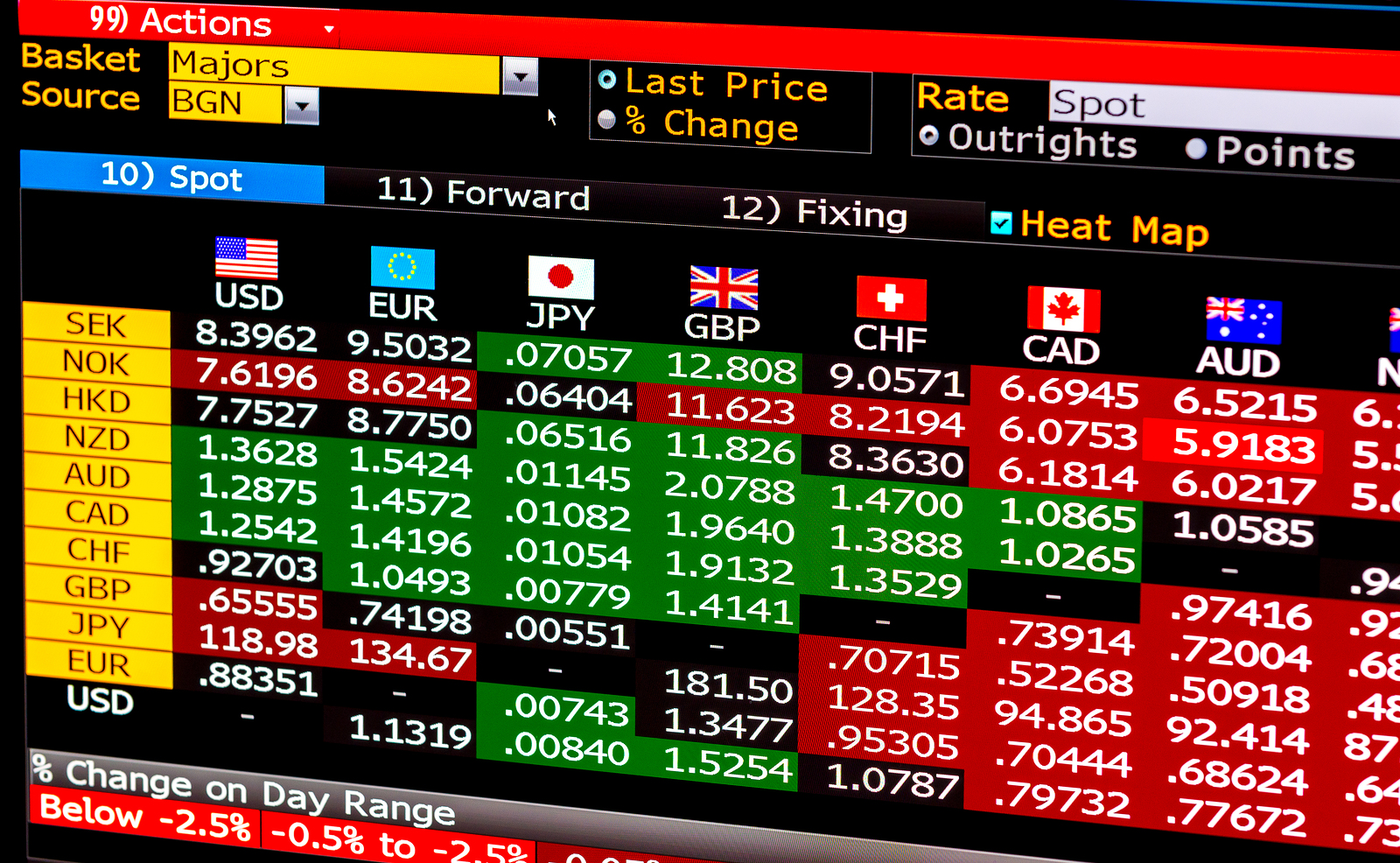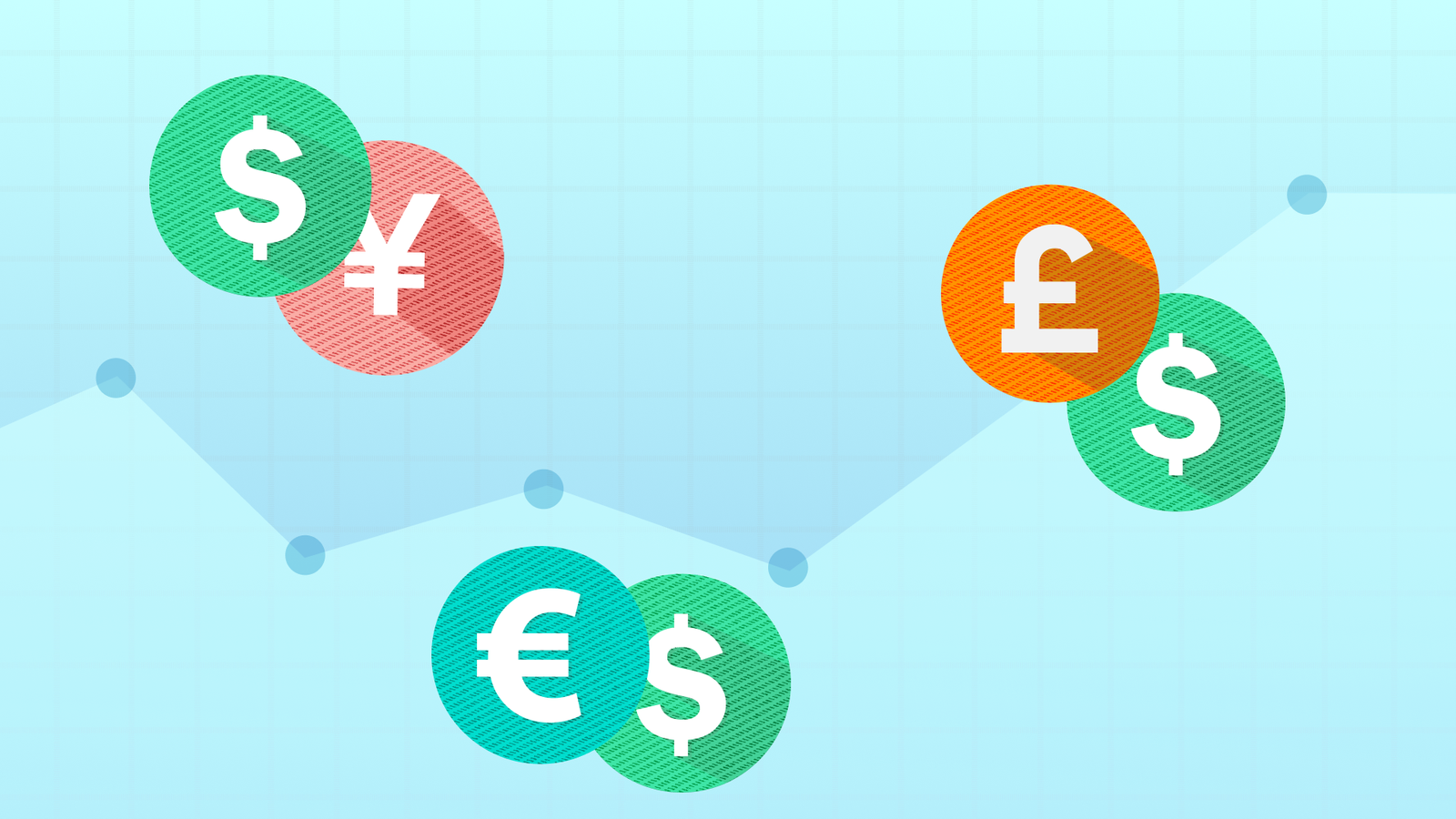When you open a trading screen and see price lines jump, is Forex Trading Hard? Managing risk, reading spreads, and choosing pairs with the right liquidity and volatility can make the market feel overwhelming for a new trader.
This guide provides practical steps to identify the best forex pairs for beginners and highlights which majors and minors, such as EUR/USD, USD/JPY, and GBP/USD, tend to offer stable, liquid action. It explains how demo accounts, stop loss, simple technical signals, and position sizing help keep risk small.
To help with that, Goat Funded Trader’s prop firm offers funded accounts and clear rules so you can trade real capital, focus on the most suitable currency pairs, and learn risk control without putting your own funds on the line.
6 Best Forex Pairs For Beginners to Trade in 2025

1. EUR USD
EUR USD leads global forex volume and gives beginners a clear starting point. Liquidity sits very high, so spreads often run under 1 pip on popular brokers. That lowers trading costs and helps you compare brokers by spread and execution.
Price moves respond to Federal Reserve and European Central Bank policy decisions, US macro releases, and Eurozone data. Watch rate statements, inflation prints, and employment numbers on the economic calendar. Technical traders pair simple moving averages, support and resistance, and breakout setups with event risk to time entries.
Volatility is moderate and often orderly, which helps you learn to read charts without constant whipsaws. Start on a demo account, use small position sizes, and set stop loss and take profit levels in pips. How will you size your first trade based on account risk rules?
2. USD JPY
The USD JPY exchange rate shows how significant central bank gaps drive currency flows. The Bank of Japan has trended toward looser policy while the Fed has moved differently, creating a persistent interest rate differential that traders can monitor.
Liquidity is deep, and spreads commonly sit near 1 pip. This pair reacts quickly during the overlap of the US and Japan sessions and major Fed or BoJ announcements. Traders use volatility filters and watch yields on US Treasuries for correlation with USD JPY moves.
Use trend following or carry-aware strategies and keep an eye on risk events like geopolitical news that can spike the safe-haven demand for the yen. Will you track US Treasury yields alongside your price charts?
3. GBP USD
GBP USD offers more substantial price swings than EUR USD, making it helpful in learning how higher volatility affects entries and stops. Spreads usually range 1.5 to 2 pips, yet liquidity remains robust in London and New York hours.
The pair reacts to Bank of England policy, UK inflation, labor data, and trade news tied to UK-EU relations. Combine macro reading with technical confirmation, such as RSI divergences or daily range breakouts. Short-term traders should watch the UK session economic releases that often create burst volatility.
Manage risk with wider stop placement and smaller position sizing to account for larger moves per pip. Which indicators will you rely on when volatility spikes during UK data?
4. AUD USD
AUD USD ties closely to commodity prices and Asian growth. Liquidity improves during Asian and Sydney hours, and typical spreads are around 1.5 pips. Traders track iron ore and coal prices as part of their fundamental checklist.
China growth updates and commodity demand shifts can move this pair more than broad macro themes alone. Technical setups that respect Asian session ranges work well. Use an economic calendar to time trades around the Chinese PMI and Australian employment figures.
Watch for correlation with commodity futures and consider lower leverage to manage sudden moves related to resource demand swings. How will you incorporate commodity checks into your trade plan?
5. USD CAD
USD CAD links directly to crude oil price action because Canada exports energy at scale. Spreads tend to be near 1.5 pips, and liquidity is good during North American hours. That makes it a practical pair for traders learning commodity-driven fundamentals.
Focus on the US Fed policy and global oil demand indicators when forming bias. Technical traders use range analysis and channel trading when oil moves slowly, and momentum entries when oil trends strongly. Correlation checks between WTI futures and USD CAD improve trade timing.
Set stops with awareness of oil news and use position sizing that reflects both currency and commodity volatility. Will you monitor oil inventories and OPEC statements before opening positions?
6. EUR GBP
EUR GBP offers lower volatility than the majors and tight spreads often below 1.5 pips, making it a proper pair for traders who want cleaner price action. The close economic ties between the Eurozone and the UK reduce extreme swings and support range-bound setups.
Primary drivers include Bank of England and Eurozone policy, trade developments, and regional growth differentials. Many traders use mean reversion and range strategies here, with clear support and resistance levels that show up on daily charts.
This pair suits those working on discipline, trade management, and refining entry timing without making significant moves constantly. What range trade rules will you test on EUR GBP next week?
Related Reading
- What Is A Lot Size In Forex
- How Much Do You Need To Start Trading Forex
- How Profitable Is Forex Trading
- What Is Swap In Forex Trading
- Forex Trading Account Types
- How To Learn Forex Trading
- Automated Forex Trading
- Fibonacci Forex Trading
- Pros And Cons Of Forex Trading
- Forex Trading Profit Per Day
What is a Forex Pair?

A forex pair shows a price relationship between two currencies. The first currency is the base, and the second is the quote. When you see EUR/USD at 1.10 it means one euro buys 1.10 U.S. dollars. This pricing lets traders compare value and place buys or sells across global markets.
Base Currency and Quote Currency Explained
The base currency is the unit you are trading. The quote currency tells you how much of that currency you need. If GBP/USD sits at 1.30 and you buy one lot of GBP, you are effectively buying pounds and shorting dollars, with profit and loss measured in the quote currency. Think in pips and lot size: a pip move on a standard lot can equal $10 in USD quoted pairs, and spread shapes transaction cost.
How to Read Forex Pairs
Currency symbols use three letters: the first two represent the country, and the last represents the currency. Watch price quotes, bid and ask, and the spread between them. Liquidity and volatility influence spreads and slippage during news events. Which pairs move smoothly most days, and which jump on headlines? Major pairs like EUR/USD, USD/JPY, and GBP/USD tend to offer tighter spreads and steadier liquidity, which suits beginners learning technical analysis and basic risk management.
Trading Mechanics to Watch: Spreads, Leverage, and Slippage
Spreads are your cost every trade, and high spreads can wipe out small gains. Leverage magnifies both gains and losses; select a leverage level that fits your risk controls. Slippage appears around news and thin markets, changing fills and execution. Keep a trading journal that records pip moves, position sizes, and how your strategy handled volatility.
Using Technical and Fundamental Analysis Together
Technical analysis gives entry and exit signals, using charts, moving averages, and RSI. Fundamental analysis tracks interest rates, central bank statements, and economic releases that move major pairs. Combine both: use fundamentals to set bias and technicals for timing, and always include stop loss placement driven by risk management.
Prop Firms and Funded Accounts: How They Fit Into Forex Trading
A funded account provider or prop firm supplies capital so you can trade without risking your own full account balance. They test skills through challenges or simulated accounts, then expose you to larger position sizes under risk rules. This setup can accelerate scale-up for disciplined traders while shifting some operational rules, such as drawdown limits and profit targets.
Questions to Ask Before Joining a Funded Program
What are the rules on maximum drawdown, allowed instruments, and trade minimums? How fast are payouts, and what share of profits do you keep? Check trading conditions such as spreads, slippage, and whether the account is simulated or live. Test the platform with a demo account first to confirm execution quality.
Goat Funded Trader gives access to simulated accounts up to $800K with some of the most trader-friendly conditions in the industry. There are no minimum targets and no time limits, plus triple paydays and up to 100% profit split. Over 98,000 traders have already collected more than $9.1 million in rewards. Payments are backed by a 2-day payment guarantee and a $500 penalty if payments are delayed. You can choose a path to funding through customizable challenges or start trading immediately with instant funding options. Sign up to Get Access to Up to $800K Today, and 25-30%off.
Related Reading
- Forex Trading Candlestick Patterns
- Forex Trading Algorithms
- Risk Management In Forex Trading
- Forex Trading Day
- Minor Forex Pairs
- Forex Trading Vs Crypto Trading
- Advanced Forex Trading
- Copy Forex Trading
What Makes a Currency Pair Beginner-Friendly?

High Liquidity
Liquidity means how easily you can buy or sell a pair without moving the price. High liquidity gives tight spreads and lower trading costs, so beginner traders face less friction when they open or close positions. It also cuts slippage and shows deeper market depth during session overlap between London and New York, which helps execute stops and limits reliably. Which currency pairs show that liquidity? The major currency pairs (EUR/USD, USD/JPY, GBP/USD, USD/CHF, AUD/USD, NZD/USD) usually offer the lowest spreads and the cleanest order flow for new traders.
Moderate Volatility
Volatility is how much the price moves in a given time. New traders do better with moderate volatility because those pairs provide trading opportunities without huge, unexpected swings. Use measures like average true range and typical pip moves to gauge how far the price can travel in a session, then size positions with solid risk management. Avoid exotic pairs and thinly traded crosses, which often spike sharply on low volume or local news. What position size will you use when volatility steps up?
Predictability From Stable Economies
Pairs tied to well-managed, large economies tend to show cleaner trends and clearer technical patterns. That predictability helps beginners test simple strategies and learn chart behavior without constant shock events. The majors linked to the US, euro area, Japan, Switzerland, and Australia typically reflect steady macro drivers, making technical analysis and trend following easier to practice. Which economic releases and central bank windows will you track to confirm trend signals?
Economic Transparency
Countries that publish regular, precise economic data and use transparent central bank communication give traders actionable information. When inflation, employment, GDP, and rate guidance arrive on a known schedule, you can plan around those events or hedge exposure. Use an economic calendar and mark major rate decisions and high-impact reports for EUR, USD, JPY, and GBP. Will you pause trading around high-impact releases or reduce size when uncertainty spikes?
Readily Available Analysis and Resources
The most traded pairs get the most coverage from news services, brokers, and technical analysts. That means plenty of chart studies, trading signals, demo strategies, and educational material tailored to beginner traders. You can compare price action across sources, test simple indicators, and use low-cost execution to validate a method. Which trusted news feeds and demo setups will you use to study EUR/USD and other best forex pairs for beginners?
Types of Forex Currency Pairs

Major Pairs
Major forex pairs always include the US dollar on one side and a major economy’s currency on the other. Examples you will trade most often are EUR/USD, USD/JPY, GBP/USD, USD/CHF, AUD/USD, USD/CAD, and NZD/USD. These pairs offer the most liquidity and the tightest spreads, which lowers trading costs and makes them ideal for beginner forex pairs and those learning pip and spread management.
Which majors should a new trader start with? Try EUR/USD first for its deep liquidity and predictable price action. USD/JPY tends to move in clearer trends and has relatively low volatility. GBP/USD moves more, so it quickly teaches position sizing and risk control. Use a demo account to practice watching spreads, testing technical analysis, and learning how news releases affect volatility.
Minor Pairs
Minor pairs, or crosses, exclude the US dollar and pair two major currencies, such as EUR/GBP, EUR/JPY, GBP/JPY, and AUD/NZD. They often offer different trading opportunities because they reflect relative strength between two economies rather than dollar moves. Liquidity sits below the majors, so that you will see wider spreads and occasional slippage during thin hours.
How do traders use crosses? Many use correlation analysis, pair trading, or technical setups that reveal clearer ranges when the dollar is quiet. Crosses can help diversify a portfolio beyond USD pairs, but practice on a demo account to get a feel for their spreads, session overlap effects, and typical volatility.
Exotic Pairs
Exotic pairs mix a primary currency with one from a smaller or emerging market. Examples include USD/TRY, USD/ZAR, USD/MXN, and EUR/TRY. These offer bigger pip moves and the potential for outsized returns, but they carry wider spreads, lower liquidity, and higher slippage. Political events, lower economic transparency, and central bank interventions can create sharp gaps and sudden directional moves.
What should you change in your trading when you pick exotics? Reduce position size, set wider stops, avoid excessive leverage, and check swap and overnight funding rates. Confirm your broker offers reliable quotes and reasonable execution for these pairs before risking live capital.
Risk Management Tips for Beginners Trading Currency Pairs

Start Small
Begin with tiny position sizes so a single bad trade cannot wipe out your account. Use micro lots or fractional lot sizing and keep risk per trade to about 0.5 to 1 percent of your account. That controls drawdown and gives you room to learn how pip moves and spreads affect profit and loss. Reduce effective leverage until you can manage margin and avoid margin call risk. Want a practical rule? Calculate the risk per trade as the account balance times your risk percentage, then choose a lot size that matches your stop loss in pips to that dollar risk.
Set Stop Loss and Take Profit Rules
Place stop loss orders and take profit orders on every trade to remove emotion from exits. Set stops using technical levels such as recent swing highs and lows or a volatility measure like Average True Range so stops are wide enough to survive normal noise but tight enough to limit losses. Aim for a consistent risk-to-reward ratio for each setup, for example, one risk to two rewards, and resist moving your stop loss farther away after opening a trade. Test trailing stops and preset take profit targets on a demo account to see how slippage and broker spreads affect real results.
Use the Economic Calendar to Plan Trades
Major economic releases change liquidity and widen spreads fast. Monitor central bank decisions, interest rate statements, CPI, and employment reports such as non-farm payrolls, so you can avoid entering new positions just before high-impact news or adjust position sizes if you plan to hold. Many traders close or reduce positions ahead of scheduled events or place pending orders outside expected volatility ranges. Which events matter most to the pairs you trade, and how will you act when they hit the calendar?
Stick with Stable Pairs
Start trading major currency pairs such as EUR USD, GBP USD, and USD JPY. These pairs offer deeper liquidity, tighter spreads, and more predictable price action than exotic pairs or thin crosses. That reduces slippage and makes technical support and resistance levels more reliable. Avoid exotic pairs like USD TRY or low liquidity crosses until you understand how broker quotes, overnight gaps, and carry affect returns. Practice your strategy on a demo account using majors before risking real capital.
Keep an Eye on Geopolitics and Policy
Unscheduled political events and sudden policy shifts can move currencies quickly and create gaps at session open. Watch headlines on trade negotiations, elections, or geopolitical crises and follow central bank commentary that signals future interest rate changes. Use news alerts and reduce position size when uncertainty spikes to limit downside from sudden moves and increased volatility. How will you adjust position sizing and stop loss placement when a major geopolitical story breaks?
Get 25-30% off Today - Sign up to Get Access to Up to $800K Today

Many traders ask whether forex trading is hard. The short answer: trading has a learning curve, but that curve depends on how you approach it. Learning basic concepts like pips, lots, leverage, and spread happens fast. The more complex parts are controlling risk, handling emotion, and designing a repeatable edge. Do you know how to size a position so a single losing trade cannot wreck your account?
Best Forex Pairs for Beginners: Which Currency Pairs to Start With
Start with major currency pairs that offer tight spreads and deep liquidity. EUR USD, USD JPY, GBP USD, AUD USD, USD CAD, and NZD USD are practical choices. These pairs trade during major market hours, show clearer trends, and respond predictably to economic data. Which pair matches your schedule and risk tolerance?
How Demo Accounts and Simulated Trading Speed Learning
Practice on a demo account to tune entries, exits, and risk rules without real-money pressure. Backtest strategies on historical data and forward tests on a simulator during live hours. That bridges technical analysis and real-time execution issues like slippage and spread widening during news releases.
Goat Funded Trader: Funding That Fits How You Trade
Goat Funded Trader gives access to simulated accounts up to $800K with trader-friendly conditions: no minimum profit targets, no time limits, and triple paydays with up to 100% profit split. You can choose a customizable challenge or start trading immediately with instant funding. Over 98,000 traders have collected more than $9.1 million in rewards, and payments clear under a two-day guarantee backed by a $500 penalty for delays. Ready to try funding that mirrors live conditions and supports your growth?
Instant Funding, Challenges, and Payment Security
Pick the path that suits you: take a challenge if you want a staged verification process, or use instant funding to start trading a funded account now. The two-day payment guarantee reduces payout uncertainty and keeps your focus on the trade plan rather than cash flow concerns. Want to get funded with up to $800K today and a 25 to 30 percent discount on onboarding?
Next Steps If You Want Faster Progress
Pick one major pair, run a strict demo plan with entry and exit rules, size risk conservatively, and keep a trade journal. When you need funding that respects how you trade, explore platforms that offer realistic simulated accounts, instant funding options, and reliable payouts to support your growth. Would you like help choosing the right pair and a step-by-step demo plan to start testing?
Related Reading
- Forex Options Trading Strategy
- Forex Trading Course For Beginners
- Forex Trading App For Beginners
- Best Laptop For Trading Forex
- How To Choose The Best Forex Broker
- Forex Trading Strategies For Beginners
- Forex Algorithmic Trading Strategies
- Best Forex Pairs For Beginners
.svg)
.avif)



.avif)





.svg)

.svg)